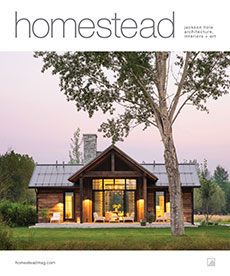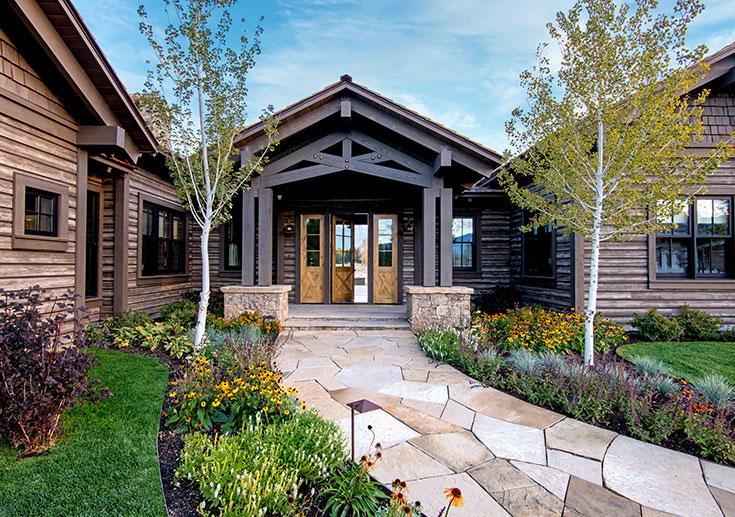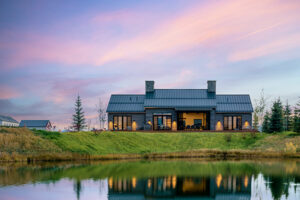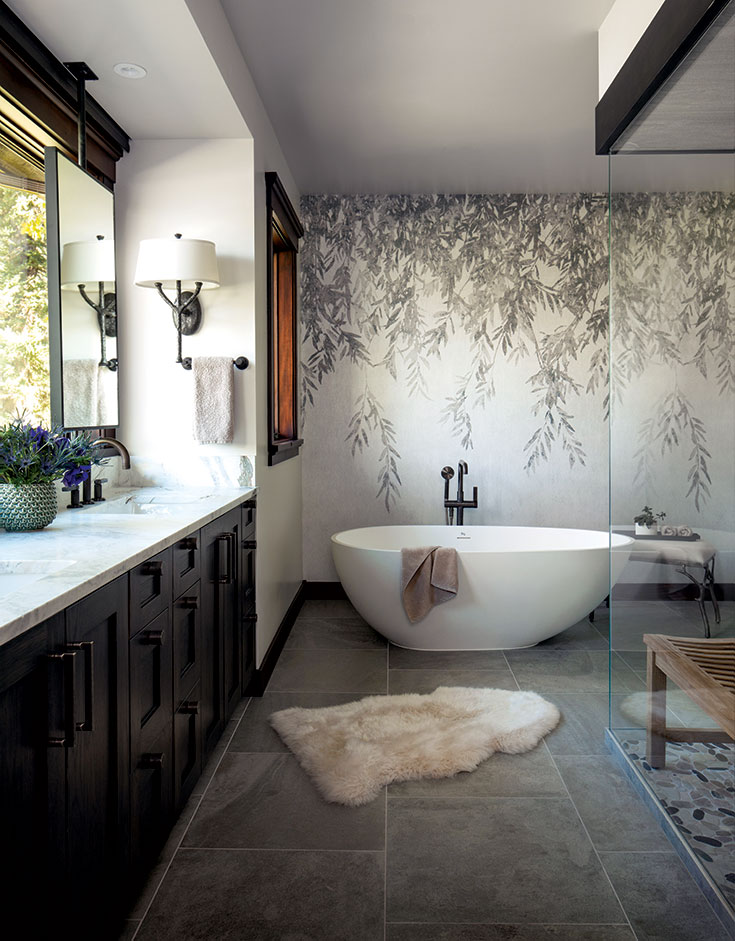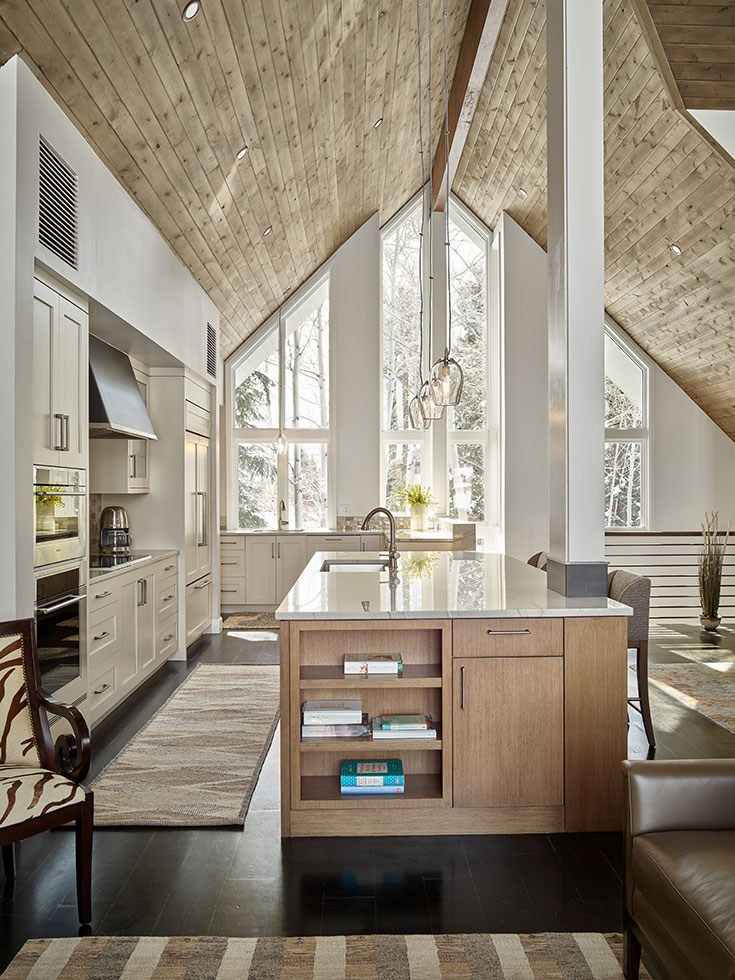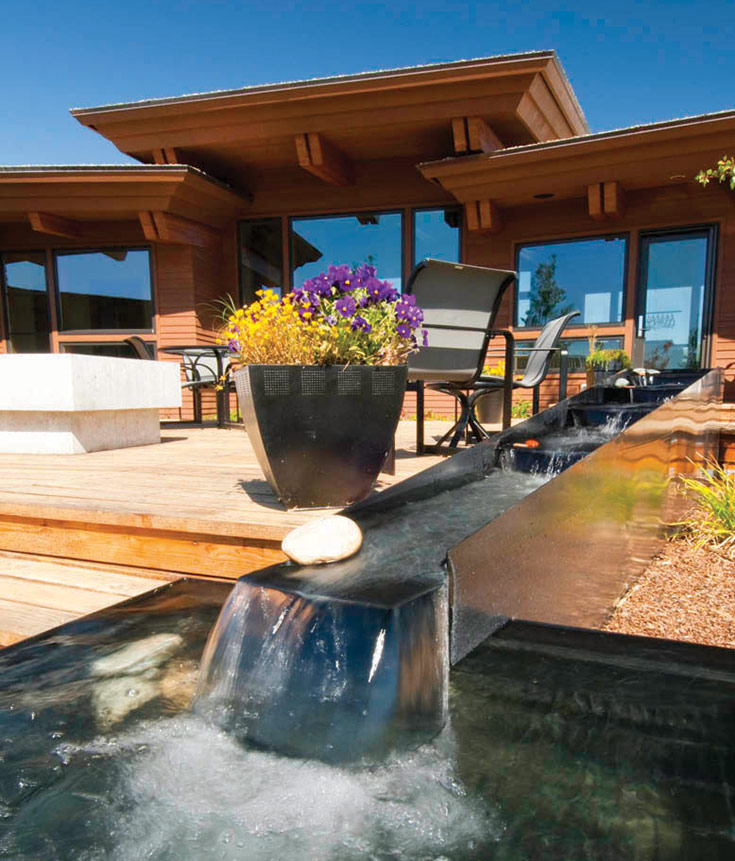
Photos By Audrey Hall + Mack Mendenhall (for Hawtin Jorgensen)
In the realm of a writer, rarely do sources choose the same words to describe the designated subject. And yet, two sources interviewed herein began the discussion about the custom-home building process with the identical phrase: “Lay bare your priorities.”
Despite the amorphous topic, architect Tom Ward and builder Jason Dunlop both value an honest expression of priorities. Dunlop sketches his initial questions: Is this a legacy project? Or an investment property? What is the primary purpose of the home: to serve as a sanctuary or a base camp for adventure?
Ward’s preliminary inquiry involves listening to both site and client, and creating an inventory of attributes. “It’s a rather nebulous barrage of input at the front end of the process,” he says. “It’s up to the designer to filter all of this and prioritize. You have to do a lot of detective work.” And the inquiry should be reciprocal, he says. Clients should investigate the architect’s priorities: peruse the firm’s website, glean its vocabulary of materials and its design philosophy.
The research phase is the most important, according to architect Bruce Hawtin. His approach involves walking the site, assessing the sun, scouting the surrounds and visiting other homes as models. Only after asking “150 questions” will he put pencil to paper.
Arne Jorgensen, Hawtin’s partner, describes the process of building an energy-efficient home in analogous language: “You must have a frank discussion of values.” For instance, adult children’s annual visits may not necessarily warrant an extra bedroom. Would resources be better invested elsewhere? Jorgensen finds that expectations of payback—often applied to energy-efficient elements—hinder the wider discussion of sustainable building practices. No one ever asks, “What is the payback on this countertop?” he says, “because they want the countertop. We never start the design discussion that way, so why should we talk about community-design issues in that manner?”
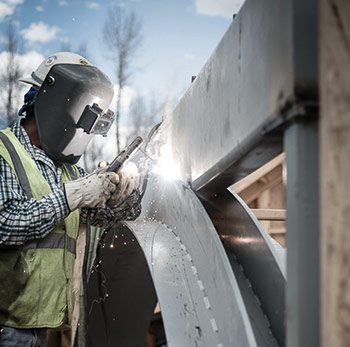
As Jorgensen outlines, clients, architects and contractors must openly discuss how the budget relates to priorities. “A frank discussion of the project’s cost is going to bracket the thought process and [approach],” Ward says. A modest budget can streamline the process. “You are going to have to limit your decisions to a small handful of topics. Others aren’t relevant. Good design can be a consensus of restraint: What you don’t do is just as important as what you do.”
Lay bare your values and priorities; be frank about budget and scope. All four professionals’ parallel conversations reveal several dynamics underlying the process: the need for transparent communication and the fundamental intimacy of building a home—as clients reveal lifestyle details (sleeping habits, bathroom rituals, etc.). Beyond the client-architect relationship, intimacy must exist within the team. Dunlop describes the third-wheel dynamic that can occur when a client foists a builder on an architect’s design. Better alignment can be achieved through a variety of means, including early engagement of the architect and the builder, an approach that maintains the distinction between professionals and creates a client-driven dynamic. Another option is design-build, which brings to the table an established collaboration between the architect and builder.
Even with integration, communication can be challenging, “because we all use different portions of our brain to get through life,” Ward says. He recalls one client responding to a presentation on the philosophical goals of the house by saying, “I have no idea what you are talking about, but you seem to be very enthusiastic about it, so I’m all in.”
In terms of sustainable building practices, the language barrier can extend to the seemingly invisible aspects of the house, like heating and ventilation. “Most people have given thought to the questions about scale and function,” Hawtin says. “But the technical aspects of the house are not things that anyone thinks about.” The architect thus becomes a translator, interpreting the client’s values into functional solutions.
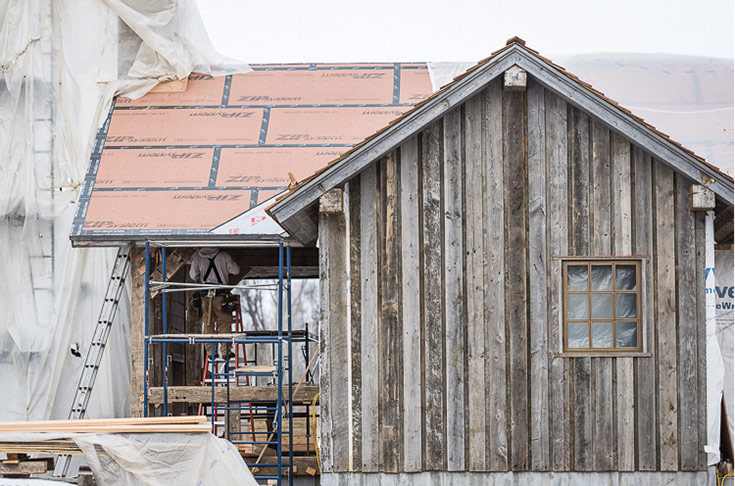
“It takes a massive leap of faith to hire an architect and manage the end result,” Ward says. “We are using someone else’s money to create our masterpieces. You have to respect a client who is willing to do that.”
Trust should suffuse all phases: The client must trust the architect; the architect must trust the builder; and the contractor must trust the subs. Such trust hinges on constant communication. “Communication is paramount throughout, as well as transparency,” Dunlop says. “If you say the tile is going to be done on the first of February, even if it’s done on the second, you must tell the client.”
Dunlop often references a happiness chart: Everyone is enthusiastic at the start and remains so well into demolition. But as soon as the drywall and dust appear, frustration sets in—and it lingers long after the crew leaves. Only when the clients have lived in the home do they register complete happiness. For Dunlop, this pattern underscores the need for empathy: “A builder and architect must be empathetic,” he says. “I get why you are mad. I understand. Here’s why this happened. When there is silence, the natural tendency is to fill it with our worst nightmares.”
Ultimately, building a home requires forging relationships with everyone involved, based on trust, transparency, empathy and patience. The process relies on people working and reasoning together. “It’s cogitative,” Ward says. “What you get out of the process is what you put in it.”
